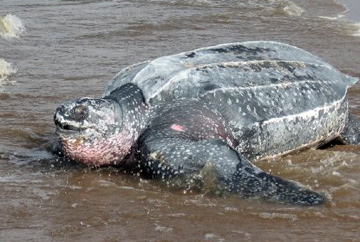New math shows that threat of extinction is underestimated globally
New math shows that threat of extinction is underestimated globally
Jeremy Hance, mongabay.com
July 7, 2008
|
|
For some species the odds of survival may have changed. According to a new study current extinction models have underestimated the threat of extinction by not factoring in differences among individuals in a population. Such differences include the ratio of males to females, size and health of animals, and individual behavioral patterns. A study conducted by Brett Melbourne of University of Colorado, Boulder and Alan Hastings of the University of California, Davis, shows that the new model speeds the extinction time for some species up to 100 times what was previously thought.
“When we apply our new mathematical model to species extinction rates, it shows that things are worse than we thought,” said Melbourne. “By accounting for random differences between individuals, extinction rates for endangered species can be orders of magnitude higher than conservation biologists have believed.”

The critically endangered Leatherback sea turtle in Suriname. Photo by Jeremy Hance. |
Previous models have focused on the effect of random events on a species’ ability to survive, breaking into two separate factors. The first focuses on how a series of adverse events would affect a population, for example an individual unexpectedly drowning. As Melbourne explains, larger populations are far more resistant than smaller populations to such happenings. The second takes into consideration external changes, such as fluctuations in rainfall and temperature, and how such changes would affect the overall population. While applicable, these models did not include data on the composition of the population.
“The results showed the old models misdiagnosed the importance of different types of randomness, much like miscalculating the odds in an unfamiliar game of cards because you didn’t know the rules,” Melbourne said.
For well-studied species, a knowledge of gender ratio and breeding capability could be used to create more accurate models. However, biologists only have this information for a very small percentage of the world’s species. And some species are particularly difficult to study in such a way. Using marine fish as an example, Melbourne said, “the best biologists can do is to measure abundances and population fluctuations”, but “it’s these species that are most likely to be misdiagnosed”.
A lack of data has always been a hurdle for conservationists. The IUCN (International Union of Conservation of Nature) is the world’s most trusted source for information on status of various species. However, of the 1.8 million known species, the IUCN only has sufficient data on 41,000 species, 16,000 of which are threatened.
Melbourne and Hastings performed experiments with beetles to test their new figures, and found the updated model predicted the beetles’ threat level better than the previous one. They suggest that conservation organizations re-evaluate their current extinction models.